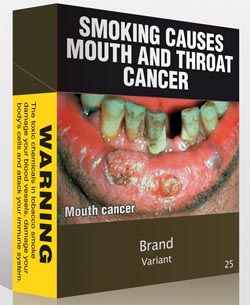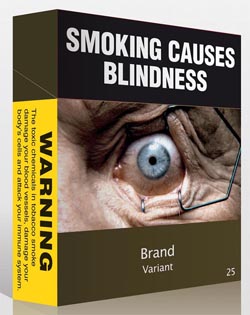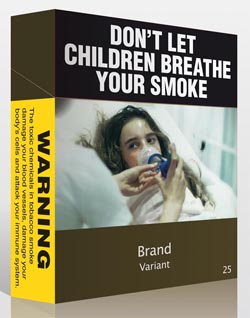2015: Taking the Fight to Big Tobacco
December 23, 2015
From Hawaii and San Francisco to New Orleans and Beijing, 2015 has been a year of groundbreaking victories in the fight against tobacco – the No. 1 cause of preventable death.
These achievements show we can win this fight and make the next generation tobacco-free – but only if the proven strategies that drive progress are fully implemented. We cannot let up because the tobacco industry never lets up – as the industry’s actions remind us over and over again. Here’s a snapshot of 2015.
U.S. Highlights
Smoking rates fell to record lows in the U.S. Smoking rates fell to 16.8 percent among adults and 11.4 percent among high school seniors, both record lows. Smoking has fallen by 60 percent among adults since 1965 and by 69 percent among 12th graders since 1997.

Health groups push to regulate e-cigarettes and cigars. While cigarette smoking has dropped, youth e-cigarette use has skyrocketed, and surveys show high school boys now smoke cigars at the same rate as cigarettes. The Campaign for Tobacco-Free Kids and other public health groups pushed the FDA and the White House to issue long-overdue rules for these products. Congress beat back an effort to weaken these rules before they even take effect.
Hawaii became the first state to raise the tobacco sale age to 21. Hawaii’s action followed a landmark Institute of Medicine report that concluded increasing the tobacco sale age would prevent young people from smoking and save lives. At least 115 cities and counties in nine states have raised the tobacco age to 21, with Boston, Cleveland and both Kansas Cities taking action this year.
Tobacco-free baseball gained momentum. San Francisco became the first city to take tobacco — including smokeless tobacco — out of baseball, quickly followed by Boston and Los Angeles. These cities set an example for all of Major League Baseball. The Campaign for Tobacco-Free Kids and our partners have led the Knock Tobacco Out of the Park campaign.

New Orleans went smoke-free. New Orleans’ groundbreaking law set an example for the South, which has lagged behind in the smoke-free movement. In another landmark step, the U.S. Department of Housing and Urban Development moved to make the nation’s public housing properties entirely smoke-free.
A trade agreement provided historic support for tobacco control. For the first time ever in a trade agreement, the Trans-Pacific Partnership reached in October by the United States and 11 other countries prevents tobacco companies from using the agreement to launch legal attacks on tobacco control measures. This is critical because the tobacco industry has abused trade agreements to fight life-saving tobacco control measures all over the world. In a related development, Bloomberg Philanthropies and the Bill & Melinda Gates Foundation launched the Anti-Tobacco Trade Litigation Fund to help countries defend their laws. The Campaign for Tobacco-Free Kids is administering the fund.
Unprecedented media campaigns help drive down smoking. 2015 saw continuation of the strongest national media campaigns ever launched to reduce tobacco use in the U.S., including the CDC”s Tips from Former Smokers campaign, the FDA’s “Fresh Empire” campaign aimed at multicultural youth and Truth Initiative’s reinvigorated truth campaign that empowers young people to end smoking for good.
International Highlights
Beijing went smoke-free. Beijing took a historic step on June 1 when it implemented a new law requiring all indoor public places, workplaces and public transportation to be smoke-free. The law also banned most forms of tobacco advertising, promotion, and sponsorship. Beijing’s law sets a critical example for China, the world’s largest consumer of tobacco with around 300 million smokers.
Plain cigarette packs spread to Europe. Inspired by Australia’s pioneering law and falling smoking rates, Ireland, the United Kingdom and France adopted laws requiring that cigarettes be sold in plain packaging, free of colorful logos and branding that glamorize smoking. In a big win for public health, Australia won an international legal battle against Philip Morris to uphold its law.
Uganda enacted a comprehensive law. Uganda set an example for Africa when it passed a comprehensive tobacco control law that requires graphic health warnings; bans all advertising, promotion and sponsorship; and sets a minimum tobacco sale age of 21.
John Oliver and the BBC take down Big Tobacco. In February, HBO’s Last Week Tonight with John Oliver delivered a devastating takedown of Philip Morris International, showing how the tobacco giant markets to young people and fights tobacco control measures around the world. Oliver introduced the world to the new face of Philip Morris: Jeff the Diseased Lung. In November, a BBC investigation provided evidence that British American Tobacco has bribed government officials in several African countries to undermine tobacco control efforts and advance company interests.
The New York Times exposed how the U.S. Chamber of Commerce fights for Big Tobacco. In a multi-part investigation, The Times detailed how the Chamber has systematically worked on behalf of the tobacco industry to fight life-saving tobacco control policies in countries around the world. The media, government officials and public health groups spoke out in protest, and CVS Health left the Chamber.
The Stop Marlboro campaign highlighted Philip Morris’ targeting of youth. The Campaign for Tobacco-Free Kids and other international public health groups launched a campaign to expose Philip Morris International’s “Be Marlboro” marketing campaign aimed at youth around the world. Advocates called on governments to ban “Be Marlboro” and any marketing tactics targeting youth. As we reflect on this historic year, the Campaign for Tobacco-Free Kids thanks our many partners and supporters who are committed to ending the tobacco epidemic for good.




